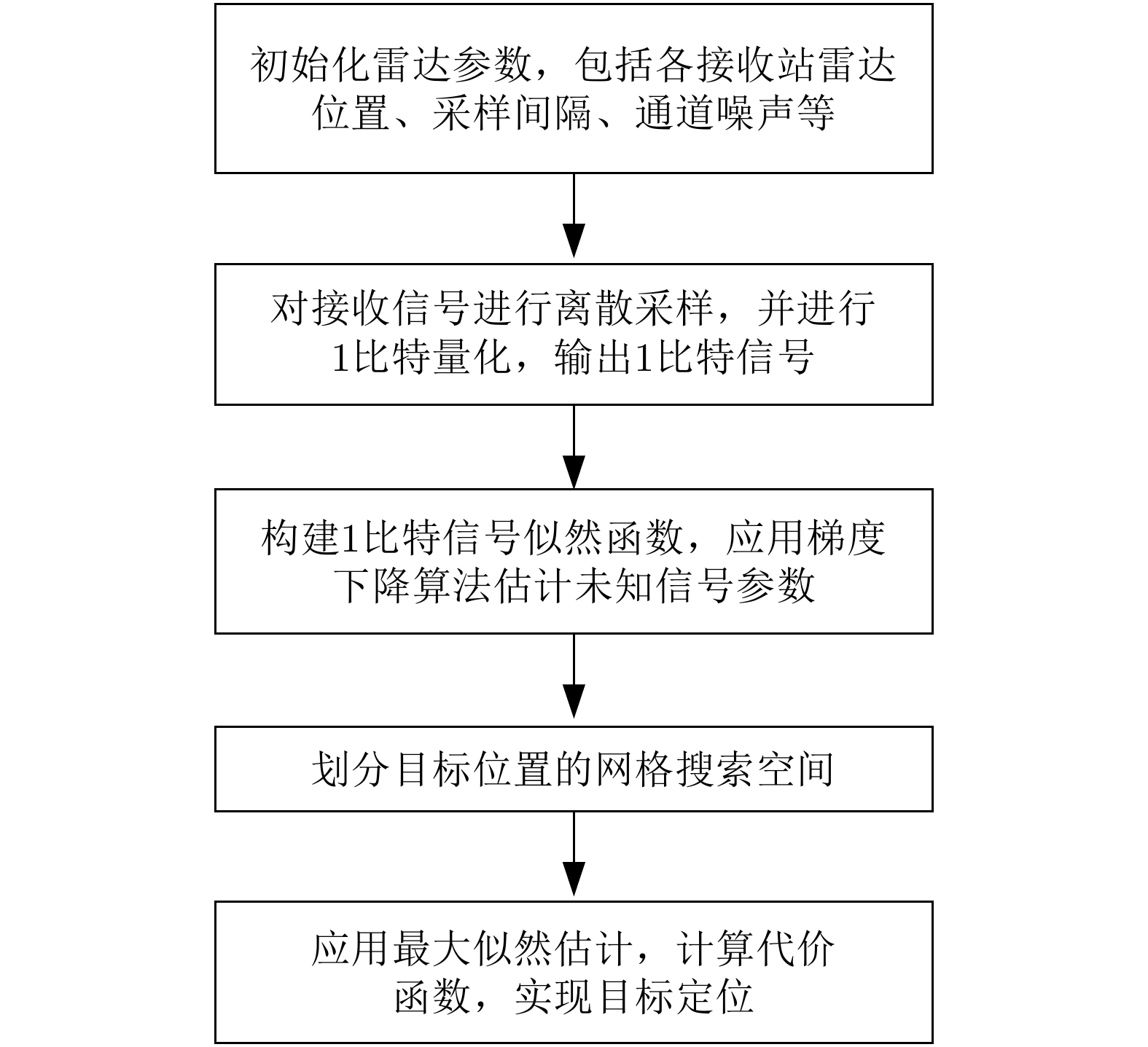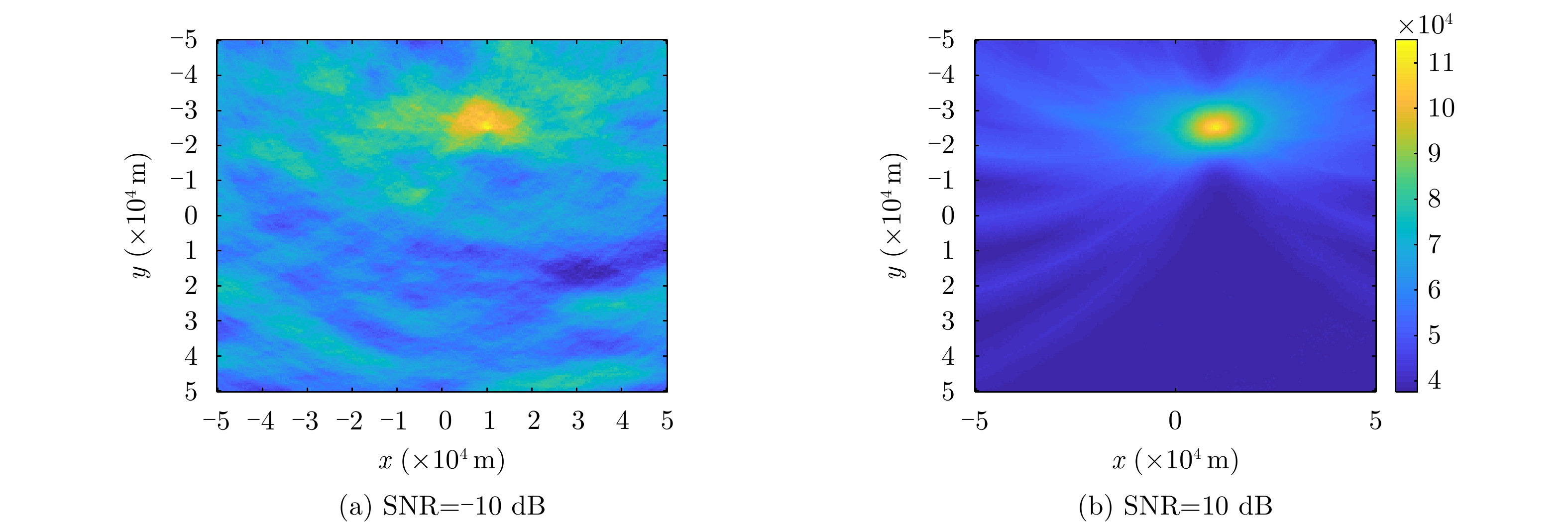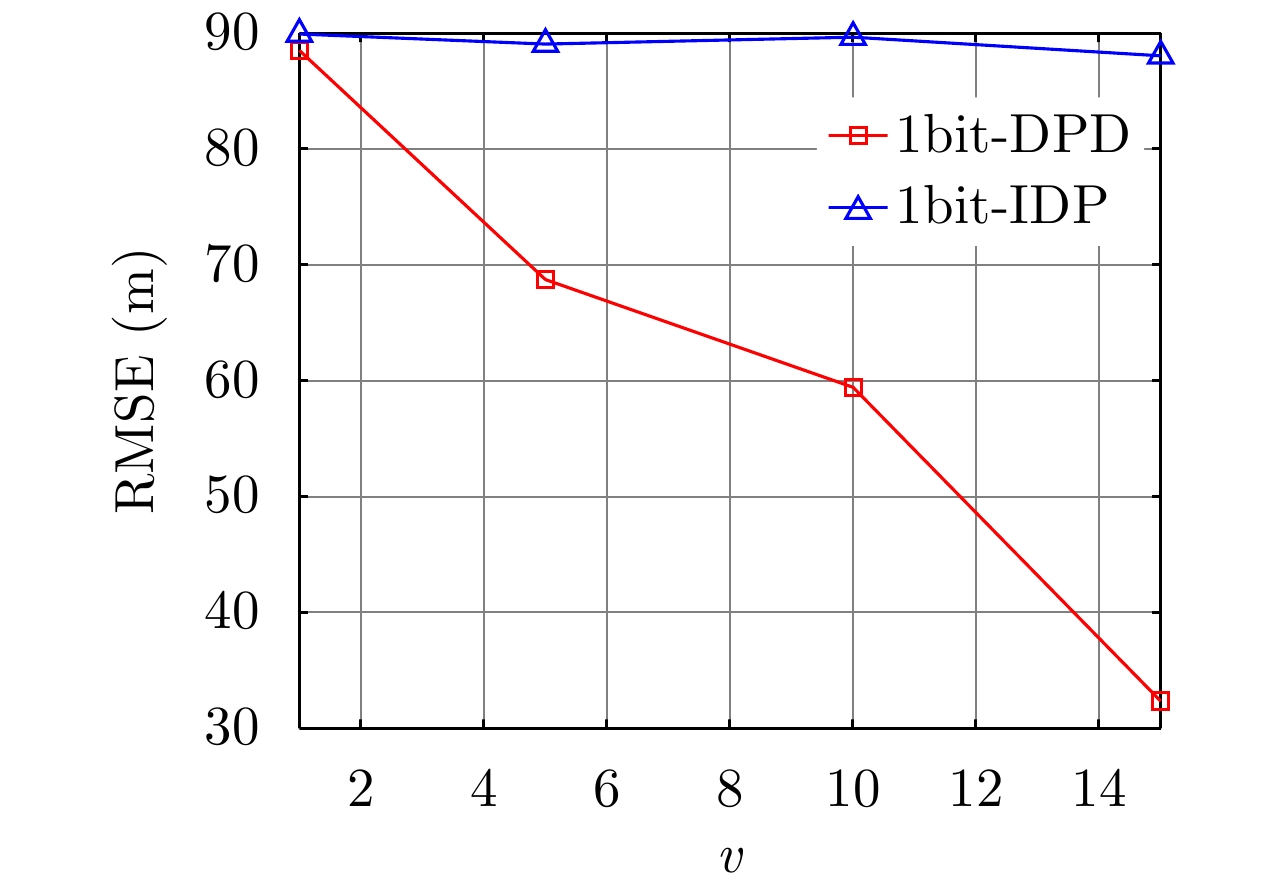| [1] |
LESTURGIE M. T06 — MIMO radar[C]. 2014 IEEE Radar Conference, Cincinnati, USA, 2014: 33.
|
| [2] |
NORRDINE A, CETINKAYA H, and HERSCHEL R. Radar wave based positioning of spatially distributed MIMO radar antenna systems for near-field nondestructive testing[J]. IEEE Sensors Letters, 2020, 4(5): 5500804. doi: 10.1109/LSENS.2020.2989546 |
| [3] |
KHAMIDULLINA L, PODKURKOV I, and HAARDT M. Conditional and unconditional Cramér-Rao bounds for near-field localization in bistatic MIMO radar systems[J]. IEEE Transactions on Signal Processing, 2021, 69: 3220–3234. doi: 10.1109/TSP.2021.3082469 |
| [4] |
SONG Haibo, WEN Gongjian, LIANG Yuanyuan, et al. Target localization and clock refinement in distributed MIMO radar systems with time synchronization errors[J]. IEEE Transactions on Signal Processing, 2021, 69: 3088–3103. doi: 10.1109/TSP.2021.3081038 |
| [5] |
DONTAMSETTI S G and KUMAR R V R. A distributed MIMO radar with joint optimal transmit and receive signal combining[J]. IEEE Transactions on Aerospace and Electronic Systems, 2021, 57(1): 623–635. doi: 10.1109/TAES.2020.3027103 |
| [6] |
LA MANNA M and FUHRMANN D R. Cramér-Rao lower bounds comparison for 2D hybrid-MIMO and MIMO radar[J]. IEEE Journal of Selected Topics in Signal Processing, 2017, 11(2): 404–413. doi: 10.1109/JSTSP.2016.2627187 |
| [7] |
HACK D E, PATTON L K, HIMED B, et al. Detection in passive MIMO radar networks[J]. IEEE Transactions on Signal Processing, 2014, 62(11): 2999–3012. doi: 10.1109/TSP.2014.2319776 |
| [8] |
ZHENG Yang, SHENG Min, LIU Junyu, et al. Exploiting AoA estimation accuracy for indoor localization: A weighted AoA-based approach[J]. IEEE Wireless Communications Letters, 2019, 8(1): 65–68. doi: 10.1109/LWC.2018.2853745 |
| [9] |
SHAO Huajie, ZHANG Xiaoping, and WANG Zhi. Efficient closed-form algorithms for AOA based self-localization of sensor nodes using auxiliary variables[J]. IEEE Transactions on Signal Processing, 2014, 62(10): 2580–2594. doi: 10.1109/TSP.2014.2314064 |
| [10] |
刘振, 苏晓龙, 刘天鹏, 等. 基于矩阵差分的远场和近场混合源定位方法[J]. 雷达学报, 2021, 10(3): 432–442. doi: 10.12000/JR20145LIU Zhen, SU Xiaolong, LIU Tianpeng, et al. Matrix differencing method for mixed far-field and near-field source localization[J]. Journal of Radars, 2021, 10(3): 432–442. doi: 10.12000/JR20145 |
| [11] |
ZHANG Fengrui, GAO Lin, SUN Yimao, et al. Time-delay-based target localization in wireless sensor network with unknown noise covariance[J]. IEEE Sensors Letters, 2021, 5(1): 7000104. doi: 10.1109/LSENS.2020.3048417 |
| [12] |
JIA Tianyi, HO K C, WANG Haiyan, et al. Effect of sensor motion on time delay and Doppler shift localization: Analysis and solution[J]. IEEE Transactions on Signal Processing, 2019, 67(22): 5881–5895. doi: 10.1109/TSP.2019.2946025 |
| [13] |
WEN Fei, LIU Peilin, WEI Haichao, et al. Joint azimuth, elevation, and delay estimation for 3-D indoor localization[J]. IEEE Transactions on Vehicular Technology, 2018, 67(5): 4248–4261. doi: 10.1109/TVT.2018.2794322 |
| [14] |
赵勇胜, 赵拥军, 赵闯. 联合角度和时差的单站无源相干定位加权最小二乘算法[J]. 雷达学报, 2016, 5(3): 302–311. doi: 10.12000/JR15133ZHAO Yongsheng, ZHAO Yongjun, and ZHAO Chuang. Weighted least squares algorithm for single-observer passive coherent location using DOA and TDOA measurements[J]. Journal of Radars, 2016, 5(3): 302–311. doi: 10.12000/JR15133 |
| [15] |
AMAR A and WEISS A J. Localization of narrowband radio emitters based on Doppler frequency shifts[J]. IEEE Transactions on Signal Processing, 2008, 56(11): 5500–5508. doi: 10.1109/TSP.2008.929655 |
| [16] |
BIANCHI V, CIAMPOLINI P, and DE MUNARI I. RSSI-based indoor localization and identification for ZigBee wireless sensor networks in smart homes[J]. IEEE Transactions on Instrumentation and Measurement, 2019, 68(2): 566–575. doi: 10.1109/TIM.2018.2851675 |
| [17] |
HOANG M T, YUEN B, DONG Xiaodai, et al. Recurrent neural networks for accurate RSSI indoor localization[J]. IEEE Internet of Things Journal, 2019, 6(6): 10639–10651. doi: 10.1109/JIOT.2019.2940368 |
| [18] |
TIRER T and WEISS A J. High resolution direct position determination of radio frequency sources[J]. IEEE Signal Processing Letters, 2016, 23(2): 192–196. doi: 10.1109/LSP.2015.2503921 |
| [19] |
TIRER T and WEISS A J. Performance analysis of a high-resolution direct position determination method[J]. IEEE Transactions on Signal Processing, 2017, 65(3): 544–554. doi: 10.1109/TSP.2016.2621729 |
| [20] |
MA Fuhe, LIU Zhangmeng, and GUO Fucheng. Distributed direct position determination[J]. IEEE Transactions on Vehicular Technology, 2020, 69(11): 14007–14012. doi: 10.1109/TVT.2020.3025386 |
| [21] |
XIA Wei, LIU Wei, and ZHU Lingfeng. Distributed adaptive direct position determination based on diffusion framework[J]. Journal of Systems Engineering and Electronics, 2016, 27(1): 28–38.
|
| [22] |
WEISS A J. Direct position determination of narrowband radio frequency transmitters[J]. IEEE Signal Processing Letters, 2004, 11(5): 513–516. doi: 10.1109/LSP.2004.826501 |
| [23] |
PICARD J S and WEISS A J. Direct position determination sensitivity to NLOS propagation effects on Doppler-shift[J]. IEEE Transactions on Signal Processing, 2019, 67(14): 3870–3881. doi: 10.1109/TSP.2019.2923152 |
| [24] |
WU Guizhou, GUO Fucheng, and ZHANG Min. Direct position determination: An overview[J]. Journal of Radars, 2020, 9(6): 998–1013. doi: 10.12000/JR20040 |
| [25] |
陈芳香, 易伟, 周涛, 等. 基于分数阶傅里叶变换的多辐射源被动直接定位算法[J]. 雷达学报, 2018, 7(4): 523–530. doi: 10.12000/JR18027CHEN Fangxiang, YI Wei, ZHOU Tao, et al. Passive direct location determination for multiple sources based on FRFT[J]. Journal of Radars, 2018, 7(4): 523–530. doi: 10.12000/JR18027 |
| [26] |
LI Bin, WANG Shusen, FENG Zhiyong, et al. Fast pseudo-spectrum estimation for automotive massive MIMO radar[J]. IEEE Internet of Things Journal, 2021, in press. doi: 10.1109/JIOT.2021.3052512 |
| [27] |
AHMED A M, AHMAD A A, FORTUNATI S, et al. A reinforcement learning based approach for multi-target detection in massive MIMO radar[J]. IEEE Transactions on Aerospace and Electronic Systems, 2021, in press. doi: 10.1109/TAES.2021.3061809 |
| [28] |
LI Bin, WANG Shusen, ZHANG Jun, et al. Fast randomized-MUSIC for Mm-wave massive MIMO radars[J]. IEEE Transactions on Vehicular Technology, 2021, 70(2): 1952–1956. doi: 10.1109/TVT.2021.3051266 |
| [29] |
FORTUNATI S, SANGUINETTI L, GINI F, et al. Massive MIMO radar for target detection[J]. IEEE Transactions on Signal Processing, 2020, 68: 859–871. doi: 10.1109/TSP.2020.2967181 |
| [30] |
LARSSON E G, EDFORS O, TUFVESSON F, et al. Massive MIMO for next generation wireless systems[J]. IEEE Communications Magazine, 2014, 52(2): 186–195. doi: 10.1109/MCOM.2014.6736761 |
| [31] |
GOKCEOGLU A, BJÖRNSON E, LARSSON E G, et al. Spatio-temporal waveform design for multiuser massive MIMO downlink with 1-bit receivers[J]. IEEE Journal of Selected Topics in Signal Processing, 2017, 11(2): 347–362. doi: 10.1109/JSTSP.2016.2628347 |
| [32] |
CIUONZO D, JAVADI S H, MOHAMMADI A, et al. Bandwidth-constrained decentralized detection of an unknown vector signal via multisensor fusion[J]. IEEE Transactions on Signal and Information Processing over Networks, 2020, 6: 744–758. doi: 10.1109/TSIPN.2020.3037832 |
| [33] |
WANG Xueqian, LI Gang, and VARSHNEY P K. Detection of sparse stochastic signals with quantized measurements in sensor networks[J]. IEEE Transactions on Signal Processing, 2019, 67(8): 2210–2220. doi: 10.1109/TSP.2019.2903034 |
| [34] |
陈莹, 钟菲, 郭树旭. 非合作跳频信号参数的盲压缩感知估计[J]. 雷达学报, 2016, 5(5): 531–537. doi: 10.12000/JR15106CHEN Ying, ZHONG Fei, and GUO Shuxu. Blind compressed sensing parameter estimation of non-cooperative frequency hopping signal[J]. Journal of Radars, 2016, 5(5): 531–537. doi: 10.12000/JR15106 |
| [35] |
KILIÇ B, GÜNGÖR A, KALFA M, et al. Sensing matrix design for compressive sensing based direction of arrival estimation[C]. 2020 28th Signal Processing and Communications Applications Conference (SIU), Gaziantep, Turkey, 2020: 1–4. doi: 10.1109/SIU49456.2020.9302073. |
| [36] |
DING Wenbo, YANG Fang, PAN Changyong, et al. Compressive sensing based channel estimation for OFDM systems under long delay channels[J]. IEEE Transactions on Broadcasting, 2014, 60(2): 313–321. doi: 10.1109/TBC.2014.2315913 |
| [37] |
REN Jiaying and LI Jian. One-bit digital radar[C]. 2017 51st Asilomar Conference on Signals, Systems, and Computers, Pacific Grove, USA, 2017: 1142–1146. doi: 10.1109/ACSSC.2017.8335529. |
| [38] |
LI Yongzhi, TAO Cheng, SECO-GRANADOS G, et al. Channel estimation and performance analysis of one-bit massive MIMO systems[J]. IEEE Transactions on Signal Processing, 2017, 65(15): 4075–4089. doi: 10.1109/TSP.2017.2706179 |
| [39] |
DABEER O and KARNIK A. Signal parameter estimation using 1-bit dithered quantization[J]. IEEE Transactions on Information Theory, 2006, 52(12): 5389–5405. doi: 10.1109/TIT.2006.885461 |
| [40] |
DABEER O and MASRY E. Multivariate signal parameter estimation under dependent noise from 1-bit dithered quantized data[J]. IEEE Transactions on Information Theory, 2008, 54(4): 1637–1654. doi: 10.1109/TIT.2008.917637 |
| [41] |
FANG Jun, LIU Yumeng, LI Hongbin, et al. One-bit quantizer design for multisensor GLRT fusion[J]. IEEE Signal Processing Letters, 2013, 20(3): 257–260. doi: 10.1109/LSP.2013.2243144 |
| [42] |
LI Xiaoying, FANG Jun, LIU Yumeng, et al. One-bit quantization for multi-sensor GLRT detection of unknown deterministic signals[C]. 2013 IEEE International Conference on Acoustics, Speech and Signal Processing, Vancouver, Canada, 2013: 4251–4255. doi: 10.1109/ICASSP.2013.6638461. |
| [43] |
BAR-SHALOM O and WEISS A J. DOA estimation using one-bit quantized measurements[J]. IEEE Transactions on Aerospace and Electronic Systems, 2002, 38(3): 868–884. doi: 10.1109/TAES.2002.1039405 |
| [44] |
XI Feng, XIANG Yijian, ZHANG Zhen, et al. Joint angle and Doppler frequency estimation for MIMO radar with one-bit sampling: A maximum likelihood-based method[J]. IEEE Transactions on Aerospace and Electronic Systems, 2020, 56(6): 4734–4748. doi: 10.1109/TAES.2020.3000841 |
| [45] |
ZHU Si, SUN Fei, and CHEN Xiaohui. Joint UWB TOA and AOA estimation under 1-bit quantization resolution[C]. 2013 IEEE/CIC International Conference on Communications in China (ICCC), Xi’an, China, 2013: 321–326. doi: 10.1109/ICCChina.2013.6671136. |
| [46] |
YI Wei, ZHOU Tao, AI Yue, et al. Suboptimal low complexity joint multi-target detection and localization for non-coherent MIMO radar with widely separated antennas[J]. IEEE Transactions on Signal Processing, 2020, 68: 901–916. doi: 10.1109/TSP.2020.2968282 |
| [47] |
HAIMOVICH A M, BLUM R S, and CIMINI L J. MIMO radar with widely separated antennas[J]. IEEE Signal Processing Magazine, 2008, 25(1): 116–129. doi: 10.1109/MSP.2008.4408448 |
| [48] |
HE Qian, BLUM R S, and HAIMOVICH A M. Noncoherent MIMO radar for location and velocity estimation: More antennas means better performance[J]. IEEE Transactions on Signal Processing, 2010, 58(7): 3661–3680. doi: 10.1109/TSP.2010.2044613 |
| [49] |
RIBEIRO A and GIANNAKIS G B. Bandwidth-constrained distributed estimation for wireless sensor networks-part I: Gaussian case[J]. IEEE Transactions on Signal Processing, 2006, 54(3): 1131–1143. doi: 10.1109/TSP.2005.863009 |
| [50] |
WANG Wei and LI Hongbin. Distributed maximum likelihood estimation for bandwidth-constrained wireless sensor networks[C]. 2006 IEEE 12th Digital Signal Processing Workshop & 4th IEEE Signal Processing Education Workshop, Teton National Park, USA, 2006: 506–510. doi: 10.1109/DSPWS.2006.265475. |
| [51] |
BOYD S P and VANDENBERGHE L. Convex Optimization[M]. New York: Cambridge University Press, 2004.
|
| [52] |
HAN Xiaodong, SHU Ting, HE Jin, et al. Joint angle-frequency estimation using nested sampling with one-bit quantization[J]. Circuits, Systems, and Signal Processing, 2020, 39(8): 4187–4197. doi: 10.1007/s00034-020-01351-8 |
| [53] |
OPPENHEIM A V and SCHAFER R W. Discrete-Time Signal Processing[M]. 3rd ed. Upper Saddle River: Prentice Hall, 2009: 140–214.
|
| [54] |
ZAMIR R. A proof of the Fisher information inequality via a data processing argument[J]. IEEE Transactions on Information Theory, 1998, 44(3): 1246–1250. doi: 10.1109/18.669301 |
| [55] |
SAMPFORD M R. Some inequalities on mill’s ratio and related functions[J]. The Annals of Mathematical Statistics, 1953, 24(1): 130–132. doi: 10.1214/aoms/1177729093 |
| [56] |
PINELIS I. Exact bounds on the inverse mills ratio and its derivatives[J]. Complex Analysis and Operator Theory, 2019, 13(4): 1643–1651. doi: 10.1007/s11785-018-0765-x |




 Submit Manuscript
Submit Manuscript Peer Review
Peer Review Editor Work
Editor Work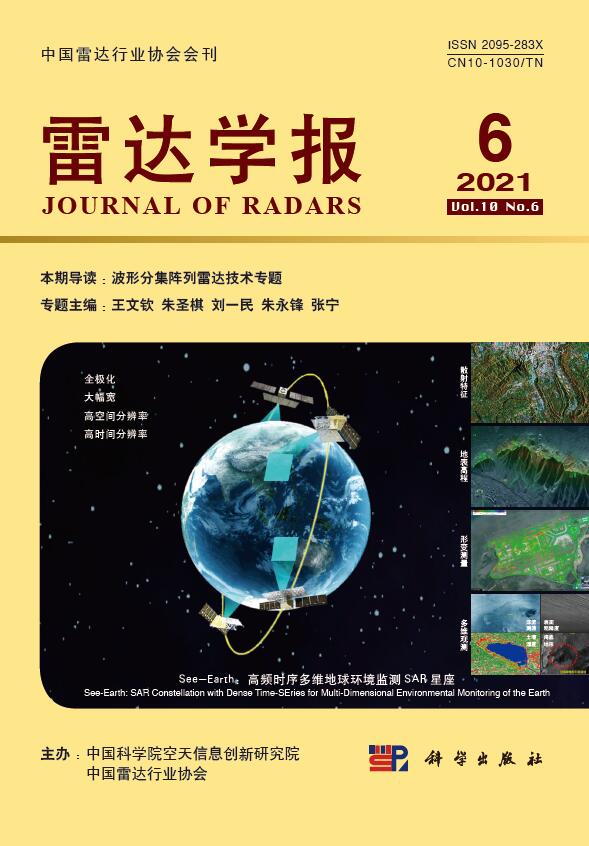

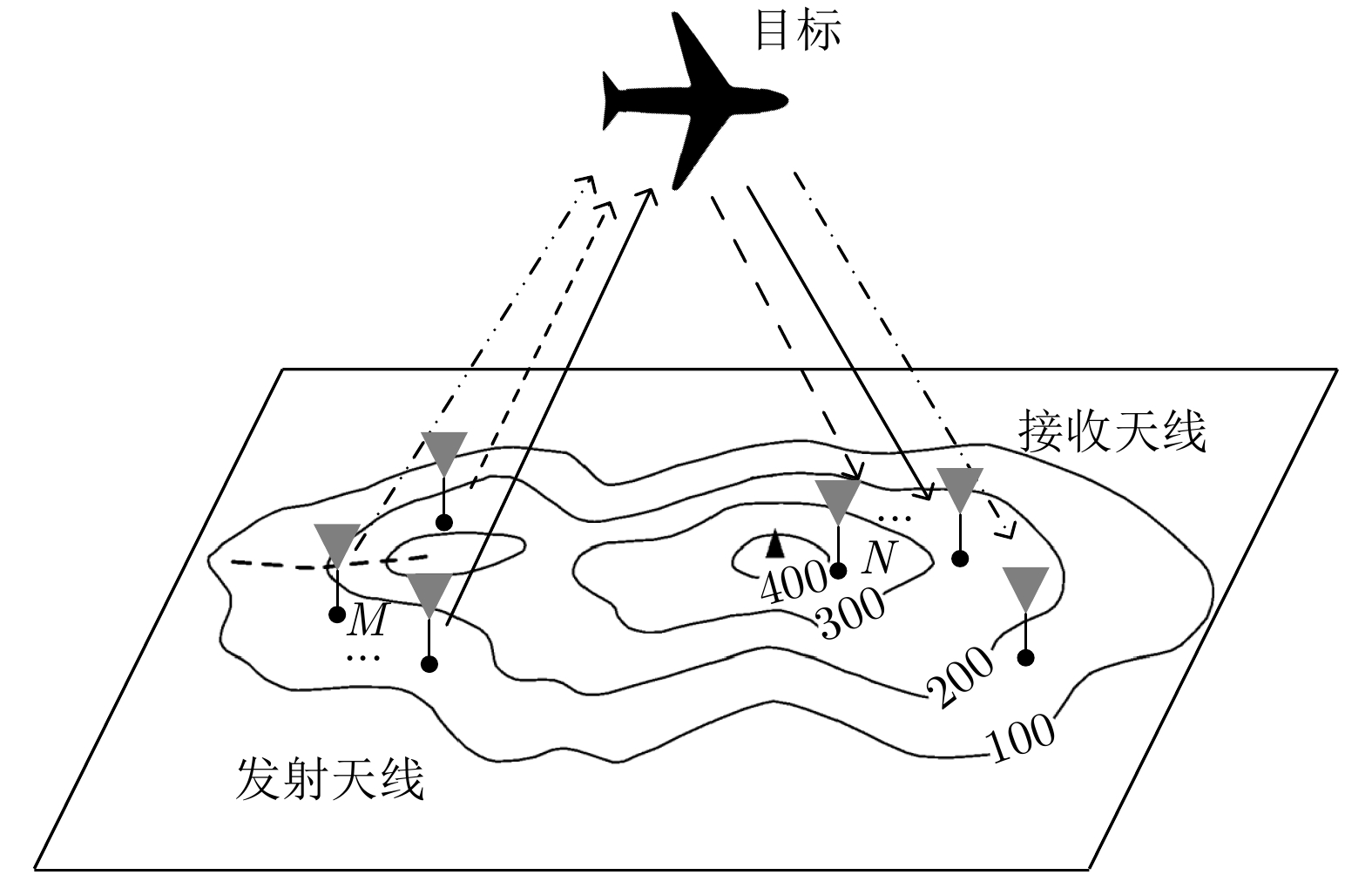



 DownLoad:
DownLoad:

